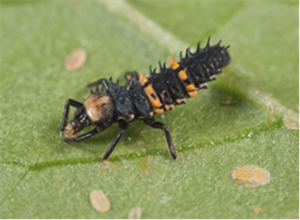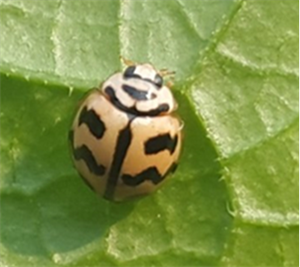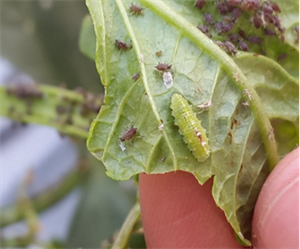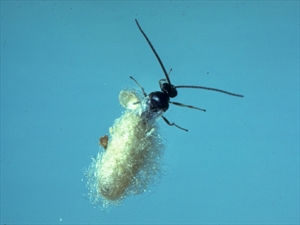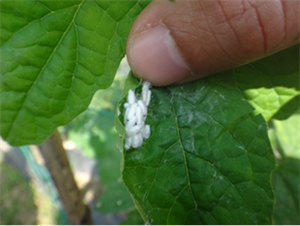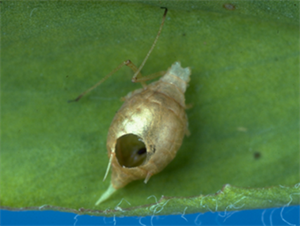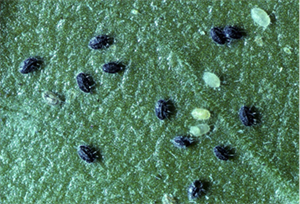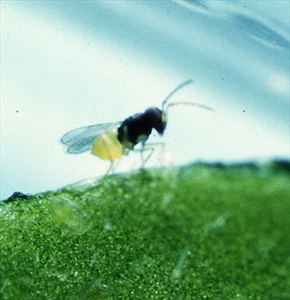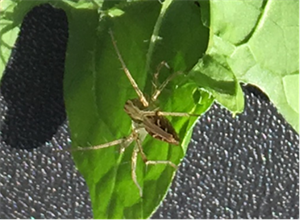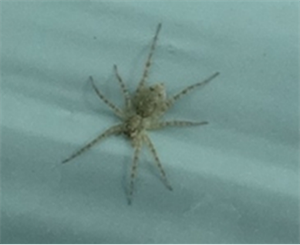In this fact sheet we list the important biological control agents (BCAs); how to attract and conserve them, the risks from using different pesticides, and show how to maximise BCAs within an integrated pest management (IPM) framework.
Predatory insects: ladybird beetles; hoverflies (or syrphid flies); lacewings. Note, they:
- Reproduce in crops or in weeds nearby.
- Often eat many kinds of insects, whether pests or BCAs (i.e., they are polyphagous).
- Are continuously available from planting to harvest.
- Lay their eggs near pest prey.
- Differ according to the life stage that attacks pests. For some it is the adult, but for others it is the larva (or maggot), or both, i.e.:
- Ladybird beetles (Photos 1&2): the adults and larvae eat other insects (see Fact Sheet no. 083).
- Hoverflies (Photo 3): only the larvae (maggots) eat other insects; adults feed on nectar and pollen (see Fact Sheet no. 084).
- Rove beetles (Photo 4): adults and larvae eat other insects.
- Lacewings: green lacewings - only the larvae eat other insects, and the adults feed on nectar, pollen and honeydew; brown lacewings - adults and larvae eat other insects (as well as spider mites) (see Fact Sheets nos. 270 & 406).
Parasitic wasps (Photos 5-11, Diagram). Note, they:
- Usually they attack one or a few species of pests.
- Reproduce by female wasps laying eggs in or on bodies of host insects - eggs, larvae, pupae or adults. The eggs hatch and wasp larvae consume the host insect eventually killing it and forming pupae. Some species produce one pupa from a host, others produce many.
- Require nectar-producing plants; adult wasps need sugar resources to develop their eggs.
- Lay eggs inside larvae, pupae or adults of pests, depending on the species. They kill their prey and are called parasitoids. Some attack many different pests, e.g., Aphidius species prey on aphids, others are specialists with a very narrow host range, e.g., Cotesia vestalis preys on diamondback moth caterpillars. (See Fact Sheets nos. 287 & 285).
Spiders. Note, they:
- Are not insects; they have eight legs (Photos 12&13)
- Eat many types of insects (polyphagous), pests and other biocontrol agents.
